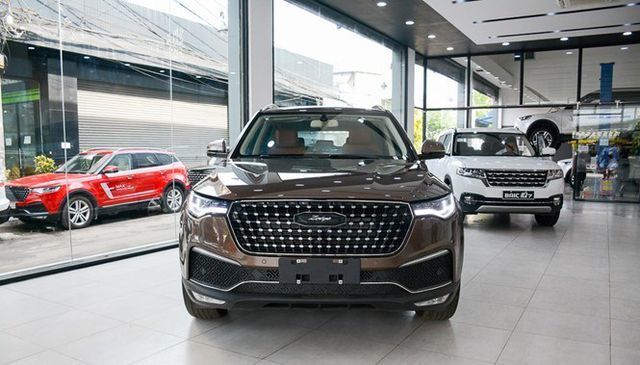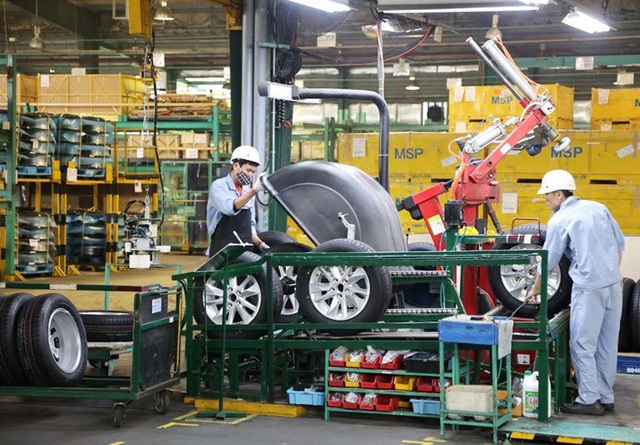- © Copyright of Vietnamnet Global.
- Tel: 024 3772 7988 Fax: (024) 37722734
- Email: evnn@vietnamnet.vn
vama
Update news vama
Vietnam’s auto market sees price cuts in 2019 as competition heats up
 2019 witnessed a fierce race among manufacturers and distributors to reduce prices to attract more buyers.
2019 witnessed a fierce race among manufacturers and distributors to reduce prices to attract more buyers.
Vietnam car market still sluggish in year-end sale season
 Despite sale promotion campaigns launched by manufacturers, the car market remained gloomy in the last months of the year.
Despite sale promotion campaigns launched by manufacturers, the car market remained gloomy in the last months of the year.
Cheap Thai cars land in Vietnam, Chinese imports stop suddenly
 Cars from Thailand led the market in the first 10 months of 2019, while fewer Chinese products have been imported because of the controversy about China's map with nine dash line.
Cars from Thailand led the market in the first 10 months of 2019, while fewer Chinese products have been imported because of the controversy about China's map with nine dash line.
Will Chinese cars flood the Vietnam market?
 Car dealers have halted the import of Chinese cars but are expected to resume early next year.
Car dealers have halted the import of Chinese cars but are expected to resume early next year.
Car imports flood Vietnam, domestically assembled cars under pressure
 Vietnam’s automobile industry not only has to compete with veterans Thailand and Indonesia, but also with new manufacturers in Laos, Cambodia and Myanmar.
Vietnam’s automobile industry not only has to compete with veterans Thailand and Indonesia, but also with new manufacturers in Laos, Cambodia and Myanmar.
Will Vietnam’s automobiles have to compete with cars from Laos and Cambodia?
 Experts believe that in the immediate time, Laos and Cambodia will not be rivals on the same par with Vietnam.
Experts believe that in the immediate time, Laos and Cambodia will not be rivals on the same par with Vietnam.
Vietnamese automobile manufacturers focus on importing cars, neglect production
 In the first half of the year, the number of cars imported to Vietnam increased by 500 percent, while some models saw a sharp increase of 650 percent compared with the same period last year.
In the first half of the year, the number of cars imported to Vietnam increased by 500 percent, while some models saw a sharp increase of 650 percent compared with the same period last year.
Vietnam’s $20 billion automobile market at risk of decline
 If supporting industries cannot develop and automobile joint ventures continue importing car parts for assembly, Vietnam’s automobile industry will not survive after 2025, analysts say.
If supporting industries cannot develop and automobile joint ventures continue importing car parts for assembly, Vietnam’s automobile industry will not survive after 2025, analysts say.
Limited car output hinders development of Vietnam's support industries
 CBU (complete built unit) imports have been flooding the Vietnamese market while domestic factories have cut output, raising concerns among car part manufacturers that they may lose jobs.
CBU (complete built unit) imports have been flooding the Vietnamese market while domestic factories have cut output, raising concerns among car part manufacturers that they may lose jobs.
Automobile sales in Vietnam can set new record in 2019
 Vietnam's automobile market is expected to set a new sales record this year with sales of the Vietnam Automobile Manufacturer Association (VAMA) members and TC Motors averaging nearly 32,000 cars each month in January-September.
Vietnam's automobile market is expected to set a new sales record this year with sales of the Vietnam Automobile Manufacturer Association (VAMA) members and TC Motors averaging nearly 32,000 cars each month in January-September.
Thai autos flooding Vietnamese market
 CBU (complete built unit) imports from Thailand account for more than 50 percent of total car imports and turnover in the first eight months of the year, according to the General Department of Customs (GDC).
CBU (complete built unit) imports from Thailand account for more than 50 percent of total car imports and turnover in the first eight months of the year, according to the General Department of Customs (GDC).
Vietnamese remain hesitant about Chinese cars
 Chinese automobile brands have quietly returned to the Vietnamese market after many years of absence.
Chinese automobile brands have quietly returned to the Vietnamese market after many years of absence.
Imported cars to be more expensive as VN raises luxury tax
 The Ministry of Industry and Trade (MOIT) has proposed raising luxury tax on some car models with fewer than nine seats.
The Ministry of Industry and Trade (MOIT) has proposed raising luxury tax on some car models with fewer than nine seats.
Will car imports ‘crush’ domestically assembled cars?
 The CBU (complete built unit) imports to Vietnam in the first seven months of the year were five times higher in number than in the same period last year.
The CBU (complete built unit) imports to Vietnam in the first seven months of the year were five times higher in number than in the same period last year.
Vietnam to spend $4.3 billion to develop automobile industry
 Experts think the plan to spend $4.3 billion to develop the automobile industry will be in vain.
Experts think the plan to spend $4.3 billion to develop the automobile industry will be in vain.
EVFTA could bring more luxury cars to Vietnam
 Under the EVFTA, Vietnam will open its market to imports from EU with the preferential tariff of zero percent.
Under the EVFTA, Vietnam will open its market to imports from EU with the preferential tariff of zero percent.
Zero-percent taxed cars enter Vietnam, bring profits to Thais, Indonesians
 Vietnam has become a large market which earns billions of dollars for Thai and Indonesian manufacturers each year.
Vietnam has become a large market which earns billions of dollars for Thai and Indonesian manufacturers each year.
Two paths for Vietnam's automobile industry
 There are two clear investment tendencies in the automobile industry. First, becoming the leading assembling center in Southeast Asia, and second, buying technologies and making automobiles for export.
There are two clear investment tendencies in the automobile industry. First, becoming the leading assembling center in Southeast Asia, and second, buying technologies and making automobiles for export.
Thai manufactured 3 million cars in 20 years, Vietnam assembled 250,000
 Twenty years ago, five large automobile manufacturers asked Vietnam to open the automobile market. But the proposal was refused.
Twenty years ago, five large automobile manufacturers asked Vietnam to open the automobile market. But the proposal was refused.
Vietnamese auto manufacturers eye ASEAN market
VietNamNet Bridge - Experts last year predicted that many automobile manufacturers in Vietnam would have to shut down after the ASEAN tariff fell to zero percent in 2018.



















